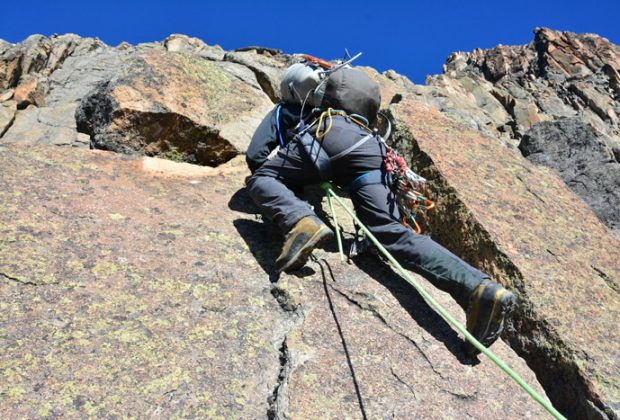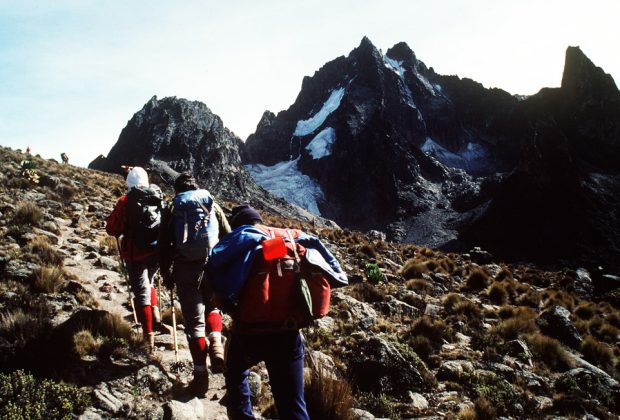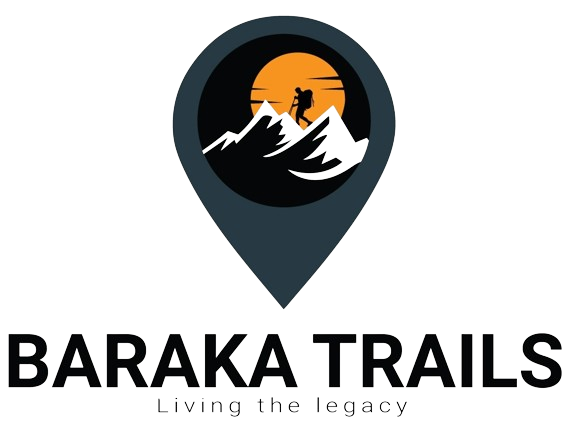5 DAYS MOUNT KENYA CLIMB



5 DAYS MOUNT KENYA CLIMB
Would you like to discover the stunning Naro Moru traverse on Mount Kenya? Then join me on this 5-day program starting from Nairobi!
At 5,199 m, Mount Kenya is the highest mountain in Kenya and the second-highest in Africa after Kilimanjaro. This stunning giant is famous for its breathtaking vegetation and wildlife. The highest peaks on Mount Kenya are Batian (5,199m), Nelion (5,188m) and Point Lenana (4,985m). On this adventure, we will climb to the top of Lenana via the Naro Moru route.
We will set off from Nairobi and drive to Nanyuki Town on the lower slopes of Mount Kenya. After lunch, we will continue driving to the Sirimon Park Gate where our trekking adventure will begin. Every day, we will cover a stretch of the route and enjoy the awe-inspiring flora and fauna that we find on the way. In the evenings, we will stay in mountain huts and campsites where we will prepare to set off early the next day. One of the highlights of our trek will be watching the sunrise from the Point Lenana summit. You can find a detailed itinerary below.
After meeting up at the international airport in Nairobi, we will drive to Nanyuki town, crossing the equator en route to Sirimon Park gate. From here, we will spend 3 to 4 hours trekking to our first camp, Old Moses camp.
We will first drive from Nairobi to Nanyuki Town in time for lunch. From there, we will drive to the Sirimon Park Gate and begin our trek. We will go through forests, bamboo and giant heather zones until we reach the high altitude moorland and the Old Moses Mountain Hut/Campsite.
After an early breakfast, we will set off to Shipton’s camp (4200m). A challenging trek will take us through hills, valleys and moorlands where we will catch sight of stunning flora and fauna including Giant groundsels, lobelias and mountain rock hyrax. This park is also home to tree climbing lions, flamingos, ground hornbill and crested eagle.
We will wake up very early around 3.30am and hike to point Lenana (4985m). Then we will descent to Mackinders hut (4300m) where we will have breakfast and continue on to the Met Station campsite. Dinner and overnight at the campsite.
We will set off early, at 3am and hike up a steep scree slope and glacier to point Lenana (4985m) to catch site of the sunrise. Then, we will descend to Mackinders camp for breakfast and continue down the Naro Moru Trail to Met Station where we will have lunch. We will have the afternoon to relax and stay overnight.
We will enjoy an early breakfast before starting our descent to the Naro Moru park gate where a vehicle will be waiting to transfer you back to Nairobi.
Not Included
- Laundry, sleeping bags, beverages/Drinks, accommodation before the trek and climbing gears
- International flights
- Visas to Kenya/ Tanzania
- Items of personal nature
- Any other extras not detailed in the above itinerary
Included
- Transfer to and from the base of the mountain
- Full board accommodation whilst on the trek.
- Meal plan as detailed
- Accommodations in camps/huts as per the itinerary
- Service of an English speaking professional guide, porters and skilled cook
- Treated water on the trek.
- On completion, successful climb Certificate
- All Transfers start and finish Nairobi
- What are the popular trekking destinations in Kenya?
- Popular trekking destinations in Kenya include Mount Kenya, the second-highest peak in Africa, and the Aberdare Range.
What is the best time of year for trekking in Kenya?
- The best time for trekking in Kenya is generally during the dry seasons, which are typically from January to February and from June to October. These months offer clearer skies and better visibility.
What are the different routes to trek Mount Kenya?
- Mount Kenya offers various trekking routes, including the popular Sirimon, Chogoria, Naro Moru, and Burguret routes. Each route offers unique landscapes and experiences.
Do I need prior trekking experience to trek in Kenya?
- While prior trekking experience is not always necessary, some treks, especially those to higher altitudes, require a good level of fitness and preparation. It’s essential to assess the difficulty level of the trek and train accordingly.
What permits or fees are required for trekking in Kenya?
- For trekking Mount Kenya, permits are required, and fees vary depending on the route and the park entry fees. It’s advisable to obtain permits in advance through the Kenya Wildlife Service (KWS) or authorized tour operators.
What should I pack for a trekking expedition in Kenya?
- Essential items for a trekking expedition in Kenya include sturdy hiking boots, appropriate clothing layers, a backpack, water bottles or a hydration system, sunscreen, insect repellent, a first aid kit, and a camera.
Are there risks associated with trekking in Kenya?
- Trekking in Kenya, especially at higher altitudes, carries inherent risks such as altitude sickness, unpredictable weather, and wildlife encounters. It’s essential to trek with experienced guides and adhere to safety guidelines.
What wildlife might I encounter while trekking in Kenya?
- While trekking in Kenya, especially in the national parks and reserves, you may encounter various wildlife species such as elephants, buffalo, antelopes, and a variety of bird species. It’s crucial to respect wildlife and maintain a safe distance.
Can I combine trekking with other activities in Kenya?
- Yes, many travelers combine trekking with other activities such as safari tours, cultural experiences, and beach vacations along the Kenyan coast for a diverse and enriching travel experience.
What level of fitness is required for trekking in Kenya?
- The level of fitness required depends on the specific trek and its difficulty level. While some treks are suitable for beginners with moderate fitness levels, others require a higher level of physical endurance and stamina. It’s essential to assess the trek’s difficulty and train accordingly.
